Power Factor, What is Power Factor and Power Triangle?
Friends, today we are going to discuss the power factor and power triangle. I will discuss all aspects of power factor like power triangle, apparent power, active power, and reactive power.
Table of Contents
What is Power Factor?
Power factor is a term of electricity which is only related to AC power, not with DC power. Before we discuss the power factor, we have to know about AC power and electrical loads. First, we will discuss the AC power.
AC Power
AC power comprises the term ac voltage and ac current. When an ac voltage is applied to a load(not fully resistive), ac current flows through it. As you can see in the image below,

In the waveform, the current is lagging with the voltage by some angle. This angle by which current lag or lead with the voltage depends on the type of load. According to the type of load, current may lag, lead, or in the same phase. The cosine of the angle between voltage and the current waveform is called the power factor. In short, we also write it as PF. As it is the cosine of an angle difference. So, the power factor can be negative, positive, or zero. But it can not be less than -1 and greater than +1.
Electrical Load
The electrical appliances which we use in our home, shop, industry, etc. are called electrical load. It can be divided into three categories as a resistive load, inductive load, and capacitive load.
Resistive Load
Electric water heaters, irons, heater, incandescent bulbs, kettles, etc. are the type of resistive load. Because it does not consist of a magnetizing coil. In the case of pure resistive load voltage and current through the load flows in the same phase. Or you can say that the angle between voltage and current is zero. Now the cosine of zero is 1. hence, in case if the pure resistive load power factor is 1.
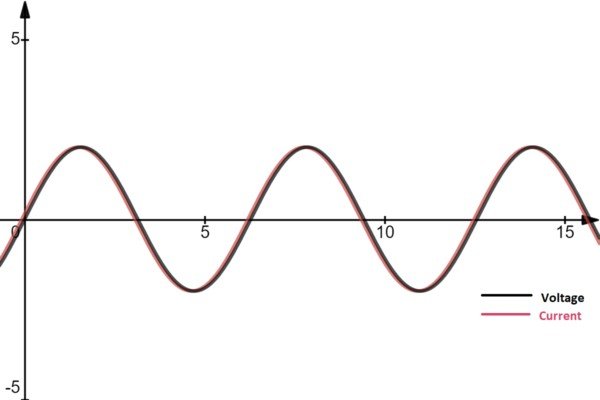
Inductive load
Electric motor, fan, fridge, washing machine, etc…are the type of inductive load. Because it consists of a magnetizing coil. In the case of pure inductive load, the current lags from the voltage by an angle of 90 degrees. Now the cosine of 90 degrees is zero. Hence in case of pure inductive load power factor is 0. But in real life, we do not get an appliance which comprises pure inductive load. That is in real life, the appliance with inductive load also consists of some resistance. And hence, the angle difference between voltage and current is always between zero and 90 degrees. That means the power factor is always between 0 and 1.

Capacitive Load
Although the capacitive load is generally not present in our home. So some time in our home or industry, we use a capacitor or capacitor bank to improve the power factor. In the case of pure capacitive load, the current leads to the voltage by an angle of 90 degrees, and hence power factor is -1(negative).
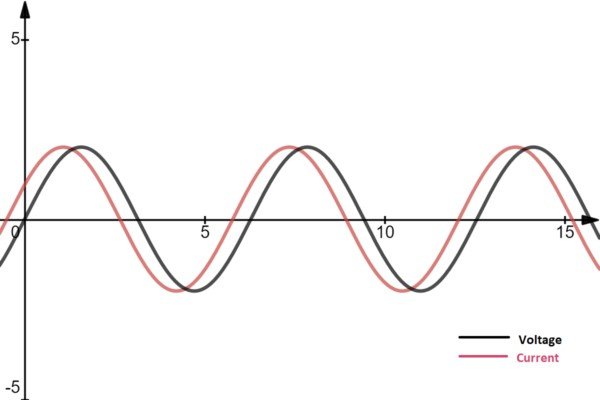
“In the case of purely resistive load power factor will be 1, in case of inductive load, it will be between 0 to 1, and in case of capacitive load, it will be less than 0 that is negative”.
Power Triangle
When we supply ac current to an appliance. Which consists of a coil, then it draws the magnetizing current other than the load current. This magnetizing current is used in establishing the magnetic field in the coil. So a part of total power supplied is used in establishing the magnetic field, which is called reactive power. The total power supplied is called apparent power, and the actual power used by the load is called active power. The relation between apparent power, active power, and reactive power in the form of a rectangle is called the power triangle.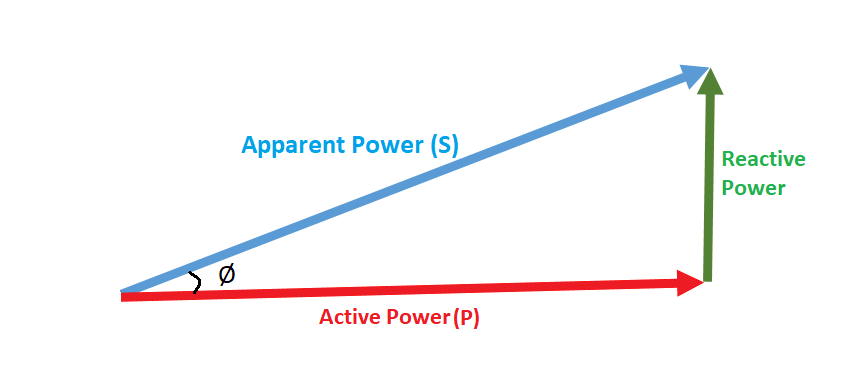
Here in the above power triangle, the angle Ø is the same angle by which current is lagging or leading by voltage. And cosine of Ø is called power factor.
Apparent Power(S) = Voltage x Current = V x I
Active Power or True power or Real Power = Apparent power x CosØ = V x I x CosØ
Reactive Power = Apparent power x SineØ = V x I x SineØ
Importance of Power Factor in our Electricity Bill
In our electricity bill other than energy charge( unit charge), fixed charge, and other charges, there is a charge called capacitive charge. It is only due to the poor power factor of our load. If in a home, shop, mall, or industry, there are more inductive load than the resistive load, then the power factor will be poor. In general, when it is between 0.9 to 1 is considered as good . when it goes below 0.9, utility companies charge some penalty in the electricity bill. And the penalty increases when the power factor goes lower. So to avoid the penalty, we need to improve the power factor.

When we connect a motor or an appliance with inductive load. It draws active and reactive power both(as you can see in the above image). The higher the reactive power, the lower the power factor. So to improve the power factor, we need to add a device that can supply reactive power.
Power Factor Improvement
To improve the power factor, we use the capacitor. In the large form, it is called the capacitor bank, which is used in large industries. Capacitor or capacitor bank used to supply the reactive power. It is connected in parallel to the inductive load. Which helps in neutralizing the lagging current or reactive power.
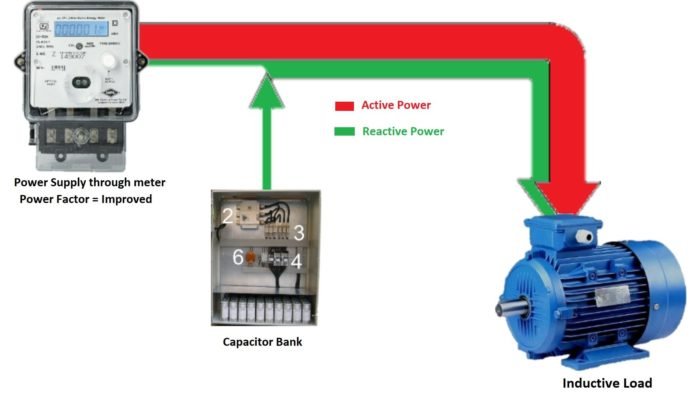
As you can see in the above image when we connect the capacitor bank in the circuit. It supplies reactive power. and hence the withdrawal of reactive power from utility decreases. which results in an improved power factor.
I hope you liked the article. If you have any doubts or suggestion please comment below and share with your friends. It will help me a lot. Thank you.

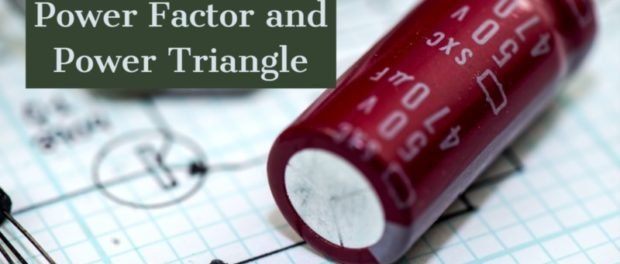
Best explanation about power factor, keep educating us